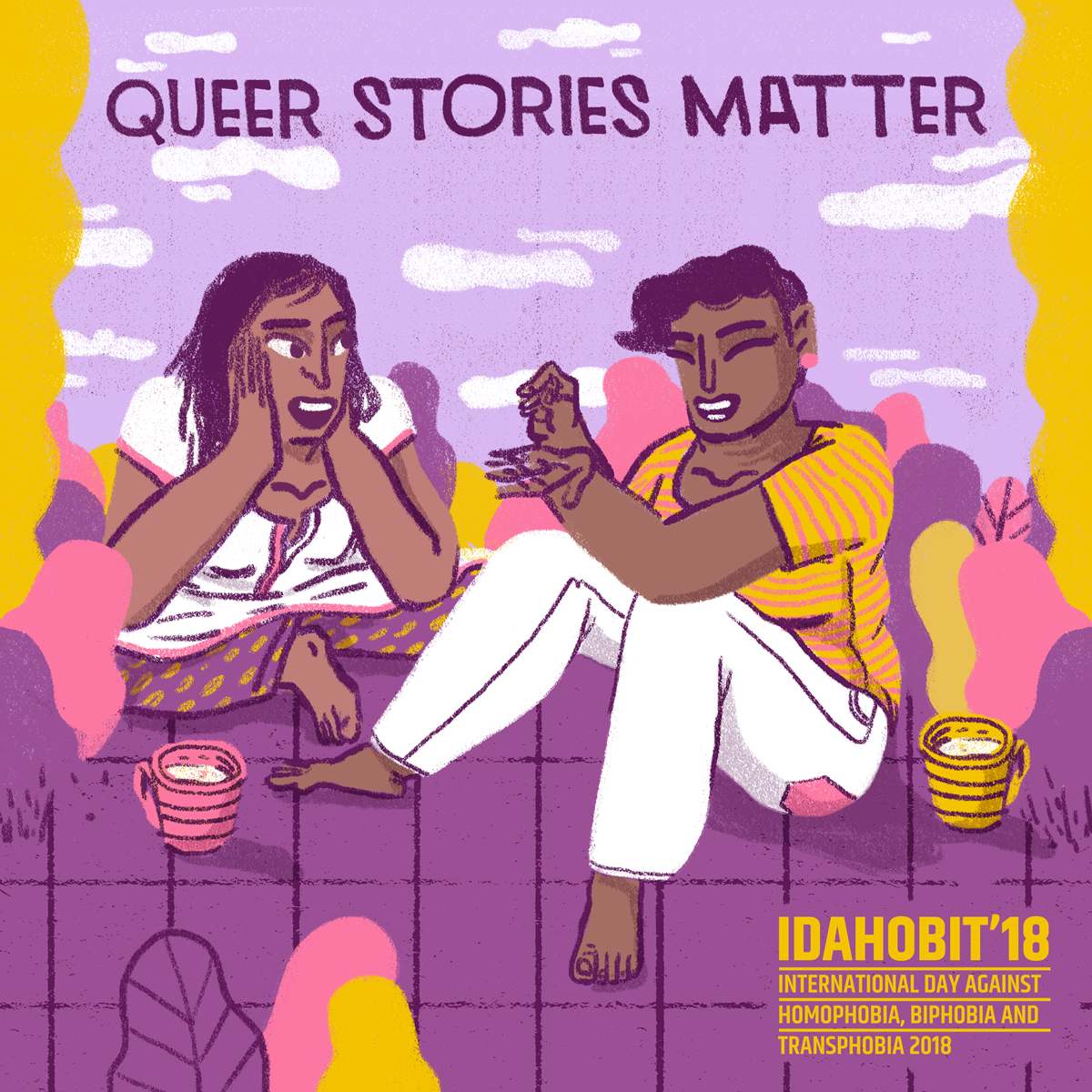Queer Habibi is Proving Queer Arabs Exist

Anonymous artist Queer Habibi is providing needed representation for the queer Arab community.
Cover photo: AMMAN, by Queer Habibi, (2018). Via Them.
This article is part of my 30 Living Queer Artists Worth Celebrating in 2019 series. June is Pride Month, commemorating the international gay rights movement that began June 28th, 1969, with the Stonewall riots of New York. 2019 marks the 50th anniversary of the event. I’m celebrating all month long!
WARNING: The following article features and/or discusses graphic nudity and homoerotica.
Queer Habibi
A Middle Eastern artist by the name of Queer Habibi is creating illustrations that represent the mundane, secret, queer life of the Arab world. He creates work anonymously to ensure his safety. Habibi is a term of endearment meaning “my love” or “my sweetheart”.
“I want to show the world that you can live in Arabian countries and be queer at the same time and there is nothing wrong with it,” explains Queer Habibi. In another interview, he adds, “I want to break the stigma surrounding queerness in Middle Eastern countries because in the end, love is a feeling which stands above every other in the world and experiencing it is just a miracle, because it’s the purest one.”
Queer Habibi illustrates queer people in quotidien scenes set in the Arab world. Many artworks feature same-sex couples and identifiable architecture like mosques and signs with Arabic words. Some scenes are intimate, others more sexual, but all serve as powerful reminders of the existence of queer people in the Middle East.
Queer Rights in the Middle East
The Middle East is commonly considered one of the worst places to be queer; in most Arab countries — though rarely enforced — sodomy is still legally punishable by death. While homophobia is often associated with Islam, both Egypt and Lebanon have large Christian populations and similar attitudes. Though overall, Beirut, Lebanon, is considered the most progressive city in the Arab world.
Queer Habibi explains, “Currently, the safest place for LGBTQ+ people in the region is Lebanon. Human rights organizations are more open in Beirut and the first Pride was held there [in 2017].” Still, Beirut is far from ideal.
In May of 2018, Beirut Pride was cancelled, after organizer Hadi Damien was detained by security services. In July, 2018, a Lebanese court ruled that same-sex relations cannot be punished under Article 534, a colonial-era law prohibiting “any sexual relations that contradict the laws of nature” but Human Rights Watch reports the Lebanese Government has continued to interfere with legal events. In September of 2018, General Security officers attempt to shut down NEDWA, a conference dedicated to LGBT rights in the Middle East.
Human Rights Watch is urging United Nations officials to investigate but, nevertheless, the road to tolerance for queer Arabs appears long and difficult.
Success & Backlash
Queer Habibi has no formal art training. He writes, “Art was a way to process and deal with my thoughts about being queer.” He has set up an Instagram page with the support of his friends. “I left my art sketches dusty on shelves for ages, but decided to share them after I showed them to friends who encouraged me.” Queer Habibi now sells his illustrations as postcards online.
Queer Habibi has amassed a large following on Instagram — over 44,000, but not everyone approves of his art. He notes, “There seems to be a backlash lately; some conservative people say very toxic things due to the fact that I include mosques and churches in the background of my images. But it’s not my purpose to offend or hurt others with my images; I solely want to spread a message of love and acceptance. The reason I draw details of cities, and characteristic buildings like churches and mosques, is that queer people will be able to identify with these places they grew up in and feel represented. Though many of my followers may still be in the closet and live behind closed doors, I think this recognition and acknowledgment is empowering them.”
Visibility & Tolerance
Ultimately, Queer Habibi wants to create visibility and change opinions: “People are mostly afraid of what they don’t know, and that’s why I have a big will to spread awareness, via my drawings, to educate, inform and tell the world there’s nothing wrong with us.”











